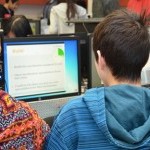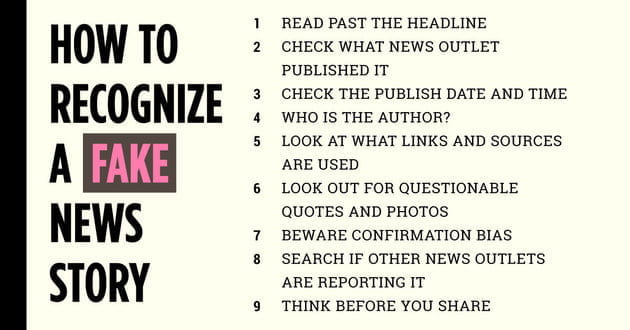It would be difficult to read a newspaper, listen to a news broadcast, or open any social media site without seeing some reference to “fake news.” NPR NewsHour’s recent interview How online hoaxes and fake news played a role in the election highlights this growing concern. There is definitely a need to bring media literacy into classrooms.
The Common Core State Standards call for media literacy:
“To be ready for college, workforce training, and life in a technological society, students need the ability to gather, comprehend, evaluate, synthesize, and report on information and ideas, to conduct original research in order to answer questions or solve problems, and to analyze and create a high volume and extensive range of print and nonprint texts in media forms old and new.” Common Core ELA Standards
However, since the standards do not come wrapped in a curriculum package, it is up to each district to provide some clarity on what media literacy looks like in our K-12 classrooms. Thankfully, the list of resources for teaching media literacy is growing (see resource list at end of post).
I’ve been an advocate for media literacy even before the Common Core. As long-time fans of Renee Hobbs, I’ve been incorporating her research (e.g., Aspen Institute paper) and resources (e.g., Media Education website & downloadable Code of Best Practices in Fair Use for Media Literacy Education) into our digital citizenship and copyright/fair use workshops for many years.
But what exactly is “media literacy”?
Educator Bill Bass shared several definitions in his recent Google Education on Air session, Media Education in a Digital Age:
- From Renee Hobb’s Digital and Media Literacy: A Plan for Action (1992 Aspen paper): “Media literacy is the ability to access, analyze, interpret, and create media (communication) in a variety of forms.”
- From the Partnership for 21st Century Learning: “Media literacy requires the ability to analyze and create media.”
- From NAMLE (National Association for Media Literacy Education): “Media literacy is the ability to ACCESS, ANALYZE, EVALUATE, CREATE, and ACT using all forms of communication.”
In addition to Bill’s resources, I’d like to add the voices of students speaking out on the role of media literacy, via Canada’s Media Literacy Now site:
Similar to the above-listed definitions, the Ontario Ministry of Education defines media literacy as
“…helping students develop an informed and critical understanding of the nature of mass media, the techniques used by them, and the impact of these techniques. More specifically, it is education that aims to increase the students’ understanding and enjoyment of how the-media work, how they produce meaning, how they are organized, and how they construct reality. Media Literacy also aims to provide students with the ability to create media products.”
How about some resources for teaching media literacy?
Here are some sites to get you started:
- How to Spot Fake News (and Teach Kids to Be Media Savvy) – From Common Sense Media, our go-to site for digital/global citizenship resources.
- Digital Citizenship – From Cyberwise, here is the link to go directly to Cyberwise’s Media Literacy Hub.
- How to Recognize a Fake News Story – From the Huffington Post, this article includes a handy chart:
- What’s Going on in This Picture? – From the NYTimes Learning Network, students can explore and discuss weekly images (because media literacy is as much about decoding and questioning images as it is about tackling text).
- KQED Media Literacy Resources – As long-time promoters of media literacy, KQED’s list is a cross-curriculum resource.
- Why Teach Media Literacy? – From Newsela, this short post includes links to their media literacy toolkit.
- Truth, Truthiness, Triangulation: A new literacy toolkit for a “post-truth” world – I’m ending this list with this extremely timely, comprehensive list from librarian extraordinaire Joyce Valenza.
How about some recommended sites for fact checking?
I’ll defer again to Joyce Valenza, who includes fact-checking sites under the Resources for building a news literacy toolkit section of her Truth, Truthiness, Triangulation post.
I hope these resources will be useful to you and your students, especially following an extremely contentious election year. As always, if you have resources to add or classroom practices to share, please contribute to the conversation by leaving a comment.


